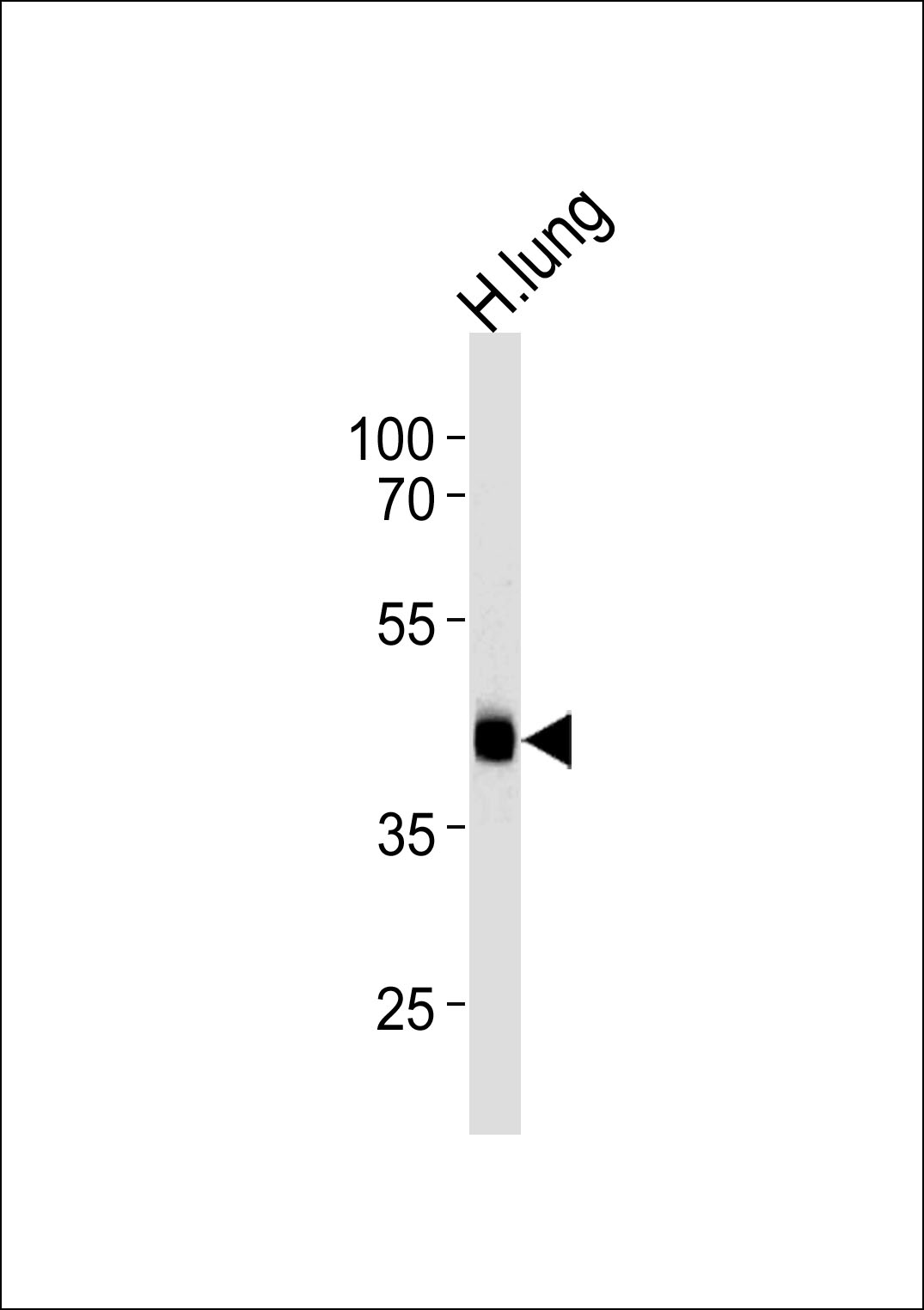MTRF1 Antibody (Center)
Affinity Purified Rabbit Polyclonal Antibody (Pab)
- 产品详情
- 实验流程
- 背景知识
Application
| WB, E |
|---|---|
| Primary Accession | O75570 |
| Other Accession | Q8K126, Q3MHI7, NP_004285.2 |
| Reactivity | Human |
| Predicted | Bovine, Mouse |
| Host | Rabbit |
| Clonality | Polyclonal |
| Isotype | Rabbit IgG |
| Calculated MW | 52306 Da |
| Antigen Region | 232-259 aa |
| Gene ID | 9617 |
|---|---|
| Other Names | Peptide chain release factor 1, mitochondrial, MRF-1, MtRF-1, MTRF1 |
| Target/Specificity | This MTRF1 antibody is generated from rabbits immunized with a KLH conjugated synthetic peptide between 232-259 amino acids from the Central region of human MTRF1. |
| Dilution | WB~~1:1000 E~~Use at an assay dependent concentration. |
| Format | Purified polyclonal antibody supplied in PBS with 0.09% (W/V) sodium azide. This antibody is purified through a protein A column, followed by peptide affinity purification. |
| Storage | Maintain refrigerated at 2-8°C for up to 2 weeks. For long term storage store at -20°C in small aliquots to prevent freeze-thaw cycles. |
| Precautions | MTRF1 Antibody (Center) is for research use only and not for use in diagnostic or therapeutic procedures. |
| Name | RF1M |
|---|---|
| Function | Mitochondrial peptide chain release factor that directs the termination of translation in response to the peptide chain non- canonical stop codons AGG and AGA (PubMed:36302763, PubMed:36596788, PubMed:37141370). Non-canonical termination codons AGG and AGA are found at the end of MT-CO1/COX1 and MT-ND6/ND6 open reading frames, respectively (PubMed:37141370). Recognizes non-canonical stop codons via a network of interactions between the codon, MTRF1 and the ribosomal RNA (rRNA): in contrast to other translation release factors, which identify the codon in the A-site via direct interactions of amino acid side chains with the bases, MTRF1 repositions the first 2 bases of the stop codon to use an intricate network of interactions that includes residues of the release factor, the rRNA of the small ribosomal subunit, as well as neighboring bases of the mRNA (PubMed:37141370). |
| Cellular Location | Mitochondrion |
For Research Use Only. Not For Use In Diagnostic Procedures.
Provided below are standard protocols that you may find useful for product applications.
BACKGROUND
The protein encoded by this gene was determined by in silico methods to be a mitochondrial protein with similarity to the peptide chain release factors (RFs) discovered in bacteria and yeast. The peptide chain release factors direct the termination of translation in response to the peptide chain termination codons. Initially thought to have a role in the termination of mitochondria protein synthesis, a recent publication found no mitochondrial translation release functionality. Multiple alternatively spliced transcript variants have been suggested by mRNA and EST data; however, their full-length natures are not clear. [provided by RefSeq].
REFERENCES
Antonicka, H., et al. Am. J. Hum. Genet. 87(1):115-122(2010)
Nozaki, Y., et al. Genes Cells 13(5):429-438(2008)
Soleimanpour-Lichaei, H.R., et al. Mol. Cell 27(5):745-757(2007)
Hansen, L.L., et al. Cytogenet. Cell Genet. 88 (1-2), 91-92 (2000) :
Zhang, Y., et al. Biochim. Biophys. Acta 1443 (1-2), 245-250 (1998) :
终于等到您。ABCEPTA(百远生物)抗体产品。
点击下方“我要评价 ”按钮提交您的反馈信息,您的反馈和评价是我们最宝贵的财富之一,
我们将在1-3个工作日内处理您的反馈信息。
如有疑问,联系:0512-88856768 tech-china@abcepta.com.























 癌症的基本特征包括细胞增殖、血管生成、迁移、凋亡逃避机制和细胞永生等。找到癌症发生过程中这些通路的关键标记物和对应的抗体用于检测至关重要。
癌症的基本特征包括细胞增殖、血管生成、迁移、凋亡逃避机制和细胞永生等。找到癌症发生过程中这些通路的关键标记物和对应的抗体用于检测至关重要。 为您推荐一个泛素化位点预测神器——泛素化分析工具,可以为您的蛋白的泛素化位点作出预测和评分。
为您推荐一个泛素化位点预测神器——泛素化分析工具,可以为您的蛋白的泛素化位点作出预测和评分。 细胞自噬受体图形绘图工具为你的蛋白的细胞受体结合位点作出预测和评分,识别结合到自噬通路中的蛋白是非常重要的,便于让我们理解自噬在正常生理、病理过程中的作用,如发育、细胞分化、神经退化性疾病、压力条件下、感染和癌症。
细胞自噬受体图形绘图工具为你的蛋白的细胞受体结合位点作出预测和评分,识别结合到自噬通路中的蛋白是非常重要的,便于让我们理解自噬在正常生理、病理过程中的作用,如发育、细胞分化、神经退化性疾病、压力条件下、感染和癌症。






